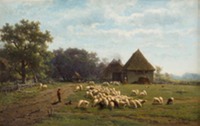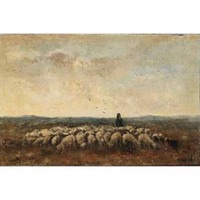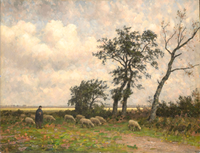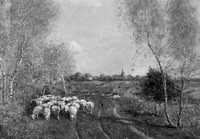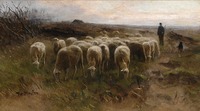julius van de sande bakhuijzen flock of sheep near exloo
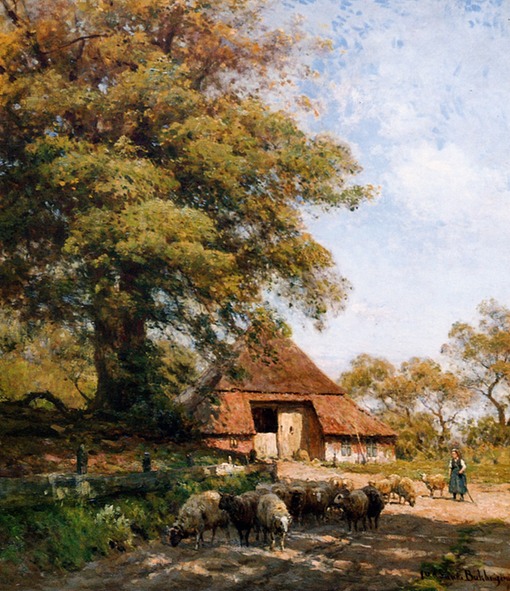
In the second half of the 19th century many artists visited the provincie of Drenthe, in the northern part of the Netherlands. In rural and isolated Drenthe painters had the opportunity to see nature in its untouched state,they could meet an authentic farming population living in pittoreske small villages. And it was cheap. With little money one could stay for a long time in Drenthe. In1870 the new railway line to Groningen made Drenthe much more accessible for painters. Drenthe used to be a inhospitable area consisting of extensive heather fields, moors, sand drifts and scarce pieces of arable land in the neighbourhood of small farming villages. By day large flocks of sheep grazed on the heatherfields to keep the heather short. In the evening they returned to their stables in the villages. The farmers used dung of the sheep as well as heather sods as fertilizer for their sandy farming land. The flock of sheep emphasized the melancholy beauty of the vast and lonely landscape. For a painter they also added depth to the bald plains of heather. Many painters of the Hague School came to Drenthe. Anton Mauve went several times to Drenthe. He stayed in Vries in the house of the painter Taco Mesdag. Mauve did not feel at ease with the melancholy tone of the landscape. From 1861 on Willem Roelofs, a predecessor of the Hague School, often spent a summer in Drente. He made several landscapes with sheep. The painter Julius van de Sande Bakhuijzen was a member of an artist family from The Hague but he loved Drenthe. A great part of his life until his death he stayed during summer in Drenthe. He rented a house in Rolde and received many colleagues. (a.o. Roelofs). He maintained close contacts with the local population and even kept a sheep just like most of the villagers. Later he moved to Exloo, known because of its flocks of sheep. But he was not a typical painter of sheep. Well known sheep painters visiting Drenthe were Francois Pieter ter Meulen and Willem Hamel. Both are considered as epigones of Anton Mauve (Mauvists), but this opinon does them wrong. Their inspiration and qualities make them more than just copiers of Mauve. Hamel lived for some years in Drenthe (Rolde). He felt quite at ease with the emptiness of the landscape but his weak health forced him to leave Drenthe. Drenthe was also discovered by foreign painters. The German painter Max Lieberman went to Drenthe guided by Jozef Israels (a.o Zweelo). Lieberman made some beautiful paintings of the village Zweelo and its farming population. During his short stay in Drenthe Vincent van Gogh describes in one of his letters his futile efforts to meet Lieberman in Zweelo. For decades the Swiss painter Alphonse Stengelin yearly stayed in Drenthe. With his family he lived in a lodge with studio in Hooghalen. He loved the untouched landscape of Northern Drenthe. World War I abruptly ended his visits to Drenthe.
